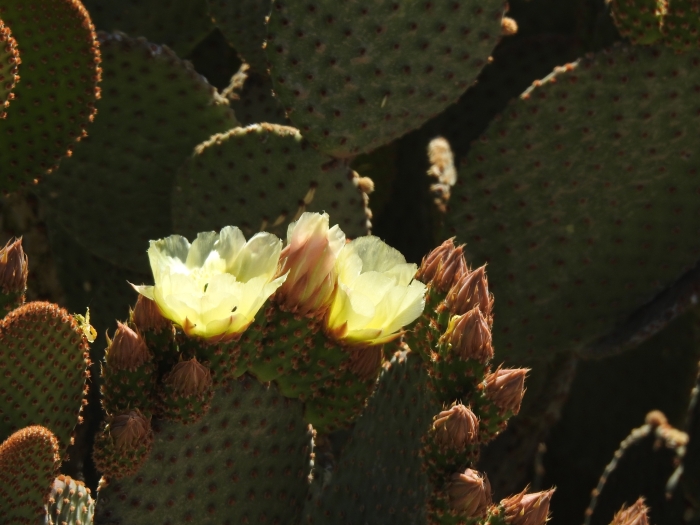Angel’s-Wings
(Opuntia microdasys)
Angel’s-Wings (Opuntia microdasys)
/
/

CK Kelly
CC BY 4.0





















































Estimated Native Range
Summary
Angel’s-Wings is valued for its unique appearance and low maintenance requirements. It is drought-tolerant and requires minimal watering once established, making it suitable for xeriscaping. It prefers well-draining soil and full sun to partial shade. In cultivation, it is often used as an ornamental plant in rock gardens, desert gardens, and as a houseplant. Due to its distinctive pad shape, it is sometimes humorously likened to a rabbit’s head when young. However, gardeners should be cautious as it can become invasive outside its native range.CC BY-SA 4.0
Plant Description
- Plant Type: Succulent, Shrub
- Height: 2-3 feet
- Width: 2-4 feet
- Growth Rate: Moderate
- Flower Color: Yellow
- Flowering Season: Spring
- Leaf Retention: Evergreen
Growth Requirements
- Sun: Full Sun
- Water: Low, Very Low
- Drainage: Fast
Common Uses
Bee Garden, Bird Garden, Deer Resistant, Drought Tolerant, Edible*Disclaimer: Easyscape's listed plant edibility is for informational use. Always verify the safety and proper identification of any plant before consumption., Erosion Control, Fire Resistant, Groundcover, Hummingbird Garden, Low Maintenance, Potted Plant, Rock Garden, Showy Flowers, Street Planting
Natural Habitat
Arid and semi-arid regions of Mexico, particularly in rocky areas, arroyos, and scrublands
Other Names
Common Names: Bunny-Ears Prickly-Pear, Polka-Dot Cactus, Bunny Cactus, Golden-Bristle, Golden Bristle Cactus, Cegador, Nopal Cegador, Nopalillo Cegador, Guldopuntia
Scientific Names: , Opuntia microdasys, Opuntia microdasys var. albispina, Opuntia microdasys var. pallida, Opuntia microdasys subsp. microdasys, Opuntia macrocalyx, Opuntia microdasys var. laevior, Cactus microdasys, Opuntia microdasys f. minor, Opuntia microdasys var. minor
GBIF Accepted Name: Opuntia microdasys (Lehm.) Pfeiff.